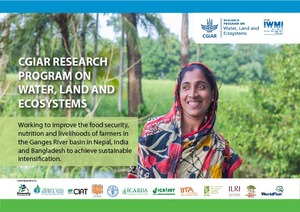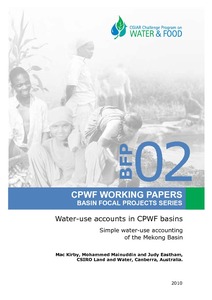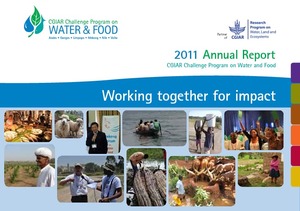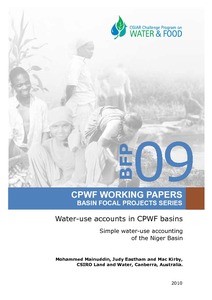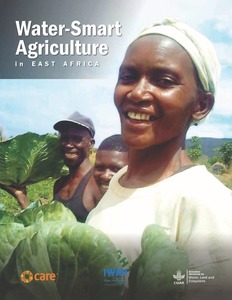Wavelet-based spatio-temporal fusion of observed rainfall with NDVI in Sri Lanka
Availability of rainfall time-series is limited in many parts of the World, and the continuity of such records is variable. This research endeavors to extend actual daily rainfall observations to ungauged areas, taking into account events of rainfall as well as cumulative total daily rainfall, over a period of 11 years. Results show that rainfall events histograms can be reconstructed, and that total cumulative rainfall is estimated with 85% accuracy, using a surrounding network of rain gauges at 30-50 Km of distance from the point of study.
Willingness to pay for improved rural water supply in Goro-Gutu District of eastern Ethiopia: An application of contingent valuation
This study employs a contingent valuation method to estimate willingness to pay for improved rural water supply. It provides information on the demand for improved services and the potential for them to be sustainable. The analysis was based on data collected from 132 households using rural water utilities for at least three years. Both binary and ordered probit models were used to examine the determinants of willingness to pay. The estimated mean and median willingness to pay was found to be Birr 6.83 and 5.87 per household per month.
Water-use accounts in CPWF basins: Simple water-use accounting of the Mekong Basin
This paper applies the principles of water-use accounts, developed in the first of the series, to the Mekong River basin in Southeast Asia. The Mekong Basin covers six
countries, the River rises in China, but there are substantial downstream tributaries
from Thailand, Laos, Cambodia, and Vietnam, and from a small area in Myanmar. A
unique feature is the reverse flow from the Mekong to the Tonle Sap via the Tonle Sap
River at the height of the wet season flow and its ebb as the river levels fall.
Watershed moments: a photographic anthology celebrating 30 years of research for a water-secure world (1985–2015 and beyond)
Working together for impact
Despite challenges in many river
basins, overall the planet has
enough water to meet the full range
of peoples’ and ecosystems’ needs
for the foreseeable future, but
equity will only be achieved through
judicious and creative management.
Wetlands and agriculture: a case for integrated water resource management in Sri Lanka
Wetlands are habitats with temporary or permanent accumulation of water. The degradation and loss of wetlands is more rapid than that for other ecosystems, and wetland-dependent biodiversity in many parts of the world is in continuing and accelerating decline. They have been confirmed to deliver a wide range of critical and important services vital for human well-being.
Winners and losers of IWRM [Integrated Water Resources Management] in Tanzania
This paper focuses on the application of the concept of Integrated Water Resources Management (IWRM) in Tanzania. It asks: how did IWRM affect the rural and fast-growing majority of smallholder farmers' access to water which contributes directly to poverty alleviation and employment creation in a country where poverty and joblessness are high?
Water-use accounts in CPWF basins: Simple water-use accounting of the Niger Basin
This paper applies the principles of water-use accounts, developed in the first of the
series, to the Niger River basin in West Africa. The Niger Basin covers 10 countries, and
rises in the highlands of southern Guinea near the border with Sierra Leone just 240
km inland from the Atlantic Ocean, but there are substantial downstream tributaries
from Cameroon and Nigeria. A unique feature is the inland delta which forms where its
gradient suddenly decreases.
Net runoff is about 12% of total precipitation. Grassland is the most extensive
What role can information play in improved equity in Pakistan’s irrigation system?: evidence from an experimental game in Punjab
The Indus Basin Irrigation System suffers significant inequity in access to surface water across its millions of users. Information, i.e., monitoring and reporting of water availability, may be of value in improving conditions across the basin, and we investigated this via an experimental game of water distribution in Punjab, Pakistan. We found evidence that flow information allowed players to take more effective action to target overuse, and that overall activities that might bring social disapproval were reduced with information.

